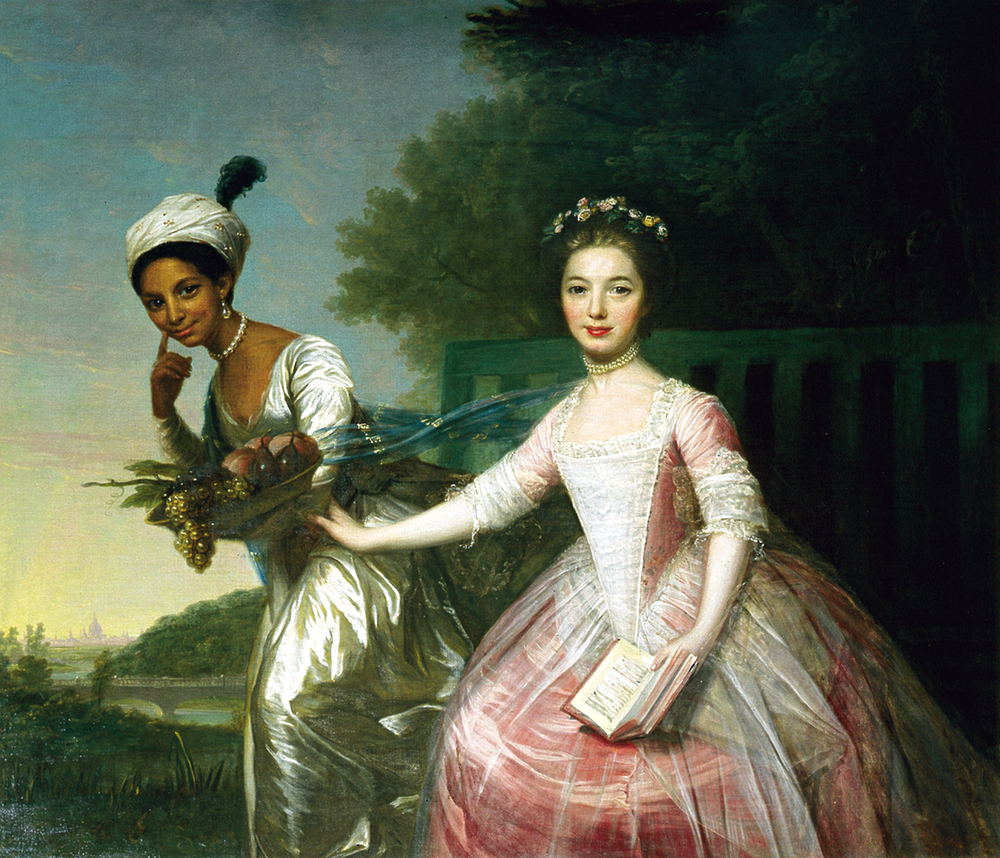It
is difficult to choose a specific work of art to analyze as a reflection of
African and European relationships and borders. The connection between these
two continents is intriguing and incredibly complex so it is important to
choose an object that will portray in details the scope of this relationship.
The enigmatic 1778 painting attributed to Johann Zoffany of Dido Elizabeth
Belle Lindsay (1761 -1804) and her cousin Lady Elizabeth Murray (1760-1825)
fits this description.


This
painting portrays two young women: the one placed front and center is a
fair-skinned, blond woman with a book in her hand who reaches out to a giggly,
dark-skinned young woman who is placed slightly on the background. It was
believed until the 1980s that the dark-skinned woman was a servant in the
Mansfield household. It was only when the British historian Gene Adams dove
into documents about this family and their property that Belle’s deep
connection was brought to surface.
Dido (who was also mentioned as
Belle) was the first dark skinned British aristocrat. She was an illegitimate
daughter of a slave and a noble Navy officer
called John Lindsay. As in the case of most slaves trafficked to the colonies,
little documentation was ever found on Dido’s mother's origins and whereabouts.
All we know is that her mother was an African slave named Maria Belle; she was
brought to the Caribbean on a Spanish ship and that Lindsay probably took her
as his concubine. Dido’s story shows that the connection between England,
Africa and the Caribbean was not restricted to commodities as coffee, sugar,
rum, cotton, and slaves: Many Europeans fathered illegitimate mixed-race
children leading to a blending of genes and culture. Captain and later Admiral
Lindsay, however, was the first to take his daughter back to England. Dido, at
her father’s request, was raised by her extended family in a luxurious mansion
in the English countryside.
It is difficult to
establish what this painting’s function is since it is surrounded by unanswered
questions. What can be assumed is that this portrait was probably commissioned
by Elizabeth’s and Dido’s uncle who was incredibly fond of both girls and
treated them as daughters. So this painting probably was not a mere
juxtaposition of white versus dark skin or to flaunt the family’s social and
economic status. Certainly these factors play a part in this portrait but they
are not its main purpose: I believe this piece of artwork places the cousin as
friends and lively young women with bright futures ahead of them – regardless
of their skin tone. This painting has a cheerful and even hopeful atmosphere to
it by portraying both girls giggling, the use of pastel colors (the pale pink
and the white dress, the beautiful sky, and the first glimpse of light in the
horizon on the bottom left corner), and them doing leisure activities (reading
a book or carrying fruits). This is painting represents a happy household
despite the gossip surrounding Belle and racial discrimination present at the
time.
No comments:
Post a Comment